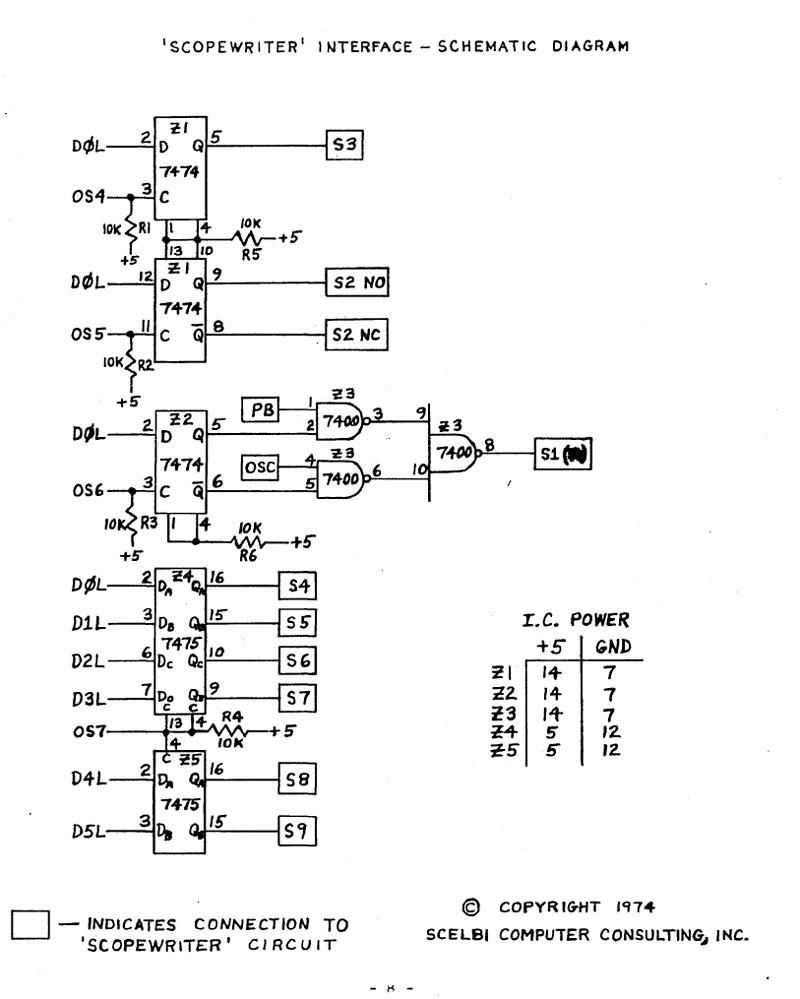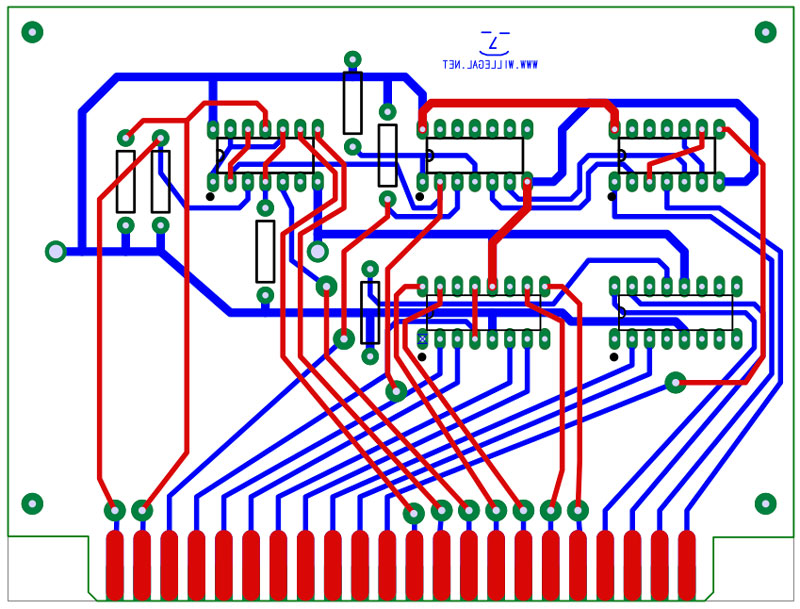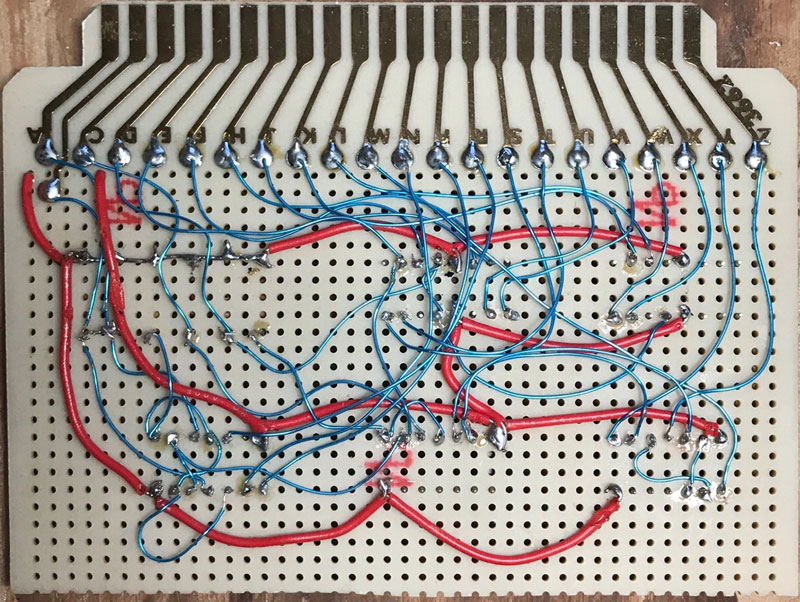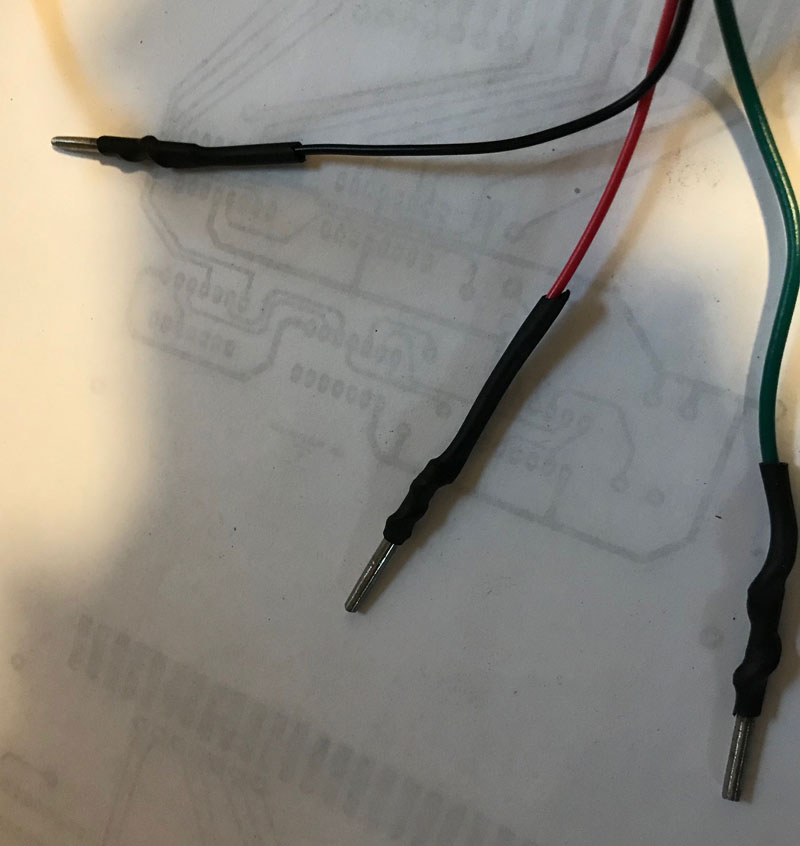This interface is pretty simple. It uses the strobes and data bit 0 from three output ports to control the Scopewriter switches S1 through S3. It uses another strobe to load the character from the data bus into a 6 bit latch.

I thought about how best to implement this design. I even went through the effort to create a PCB design.

In the process of creating this PCB layout, I think I found one mistake in the schematics. OS7 should be connected to pin 13 on Z5 instead of pin 4. I’ll verify this when I power up and check it out.
When I remembered that I had a perf board with a 44 pin edge connector, I decided to build the Scopewriter interface with that. I could have etched the PCB that I laid out. This design requires a two sided PCB and etching those at home is quite a fiddly process. This perf board probably would have been slightly quicker to wire using wirewrap techniques, but I didn’t have a sufficient quantity of wirewrap sockets. I was able to complete the wiring on the perf board in about a half a day. That is about the same amount of time that it would take to cut, etch and drill a custom PCB. The result is shown below.

The interface uses 22 signal lines, which doesn’t leave room for power and ground on the same side of the edge connector. I decided to add +5 volts and ground to pins 1 and 3, on the top side. Those are the red wires in the photo.
Since I’m short on Amphenol sockets, I decided to connect three of the four strobes from the SCELBI chassis, without a full connector. I cut down and filed a finish nail so that it would fit snuggly into an Amphenol socket. Then I soldered it to the end of each wire.

It occurred to me that this interface could probably be redesigned to use two output ports instead of four. This can be done by latching data bits 1 and 2 with OS4, instead of using separate strobes to control S1 and S2. I decided to stay with the original design, so I could use the original software.
The build decisions were partly driven by what I had in my spare parts stash, which once again proved diverse enough to support this project without requiring any new purchases. That is a good thing.
